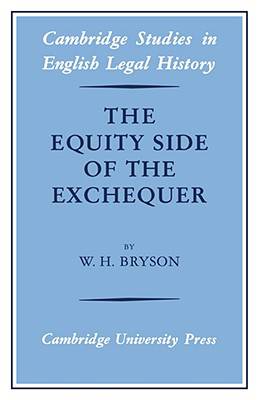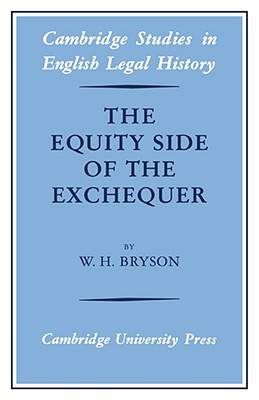
- Afhalen na 1 uur in een winkel met voorraad
- Gratis thuislevering in België vanaf € 30
- Ruim aanbod met 7 miljoen producten
- Afhalen na 1 uur in een winkel met voorraad
- Gratis thuislevering in België vanaf € 30
- Ruim aanbod met 7 miljoen producten
Zoeken
Omschrijving
The court of the exchequer, which was the ancient court of tax claims, assumed an equity jurisdiction in the sixteenth century which continued until 1841. This book describes the rise, development and abolition of this part of the court. Professor Bryson begins with a discussion of the rise of the equity side of the court during the reign of Henry VIII or Edward VI and its rapid growth under Elizabeth I. This is followed by a note on the generalizing of its jurisdiction at the beginning of the Interregnum. The third chapter deals with the duties of the principal officers - the lord treasurer, the chancellor of the exchequer, the barons of the exchequer, the king's remembrances, and the eight sworn clerks. The fourth chapter traces the equity procedures and describes the archives, which are now in the Public Record Office in London. This chapter will be useful to those who wish to compare this court with another court of equity or to use the exchequer records. Chapter 5 sets out the reasons for the suppression of the equity jurisdiction. This book supplies important information for the lawyer, the historian and the archivist.
Specificaties
Betrokkenen
- Auteur(s):
- Uitgeverij:
Inhoud
- Aantal bladzijden:
- 232
- Taal:
- Engels
- Reeks:
Eigenschappen
- Productcode (EAN):
- 9780521076593
- Verschijningsdatum:
- 11/09/2008
- Uitvoering:
- Paperback
- Formaat:
- Trade paperback (VS)
- Afmetingen:
- 140 mm x 216 mm
- Gewicht:
- 299 g

Alleen bij Standaard Boekhandel
+ 129 punten op je klantenkaart van Standaard Boekhandel
Beoordelingen
We publiceren alleen reviews die voldoen aan de voorwaarden voor reviews. Bekijk onze voorwaarden voor reviews.











